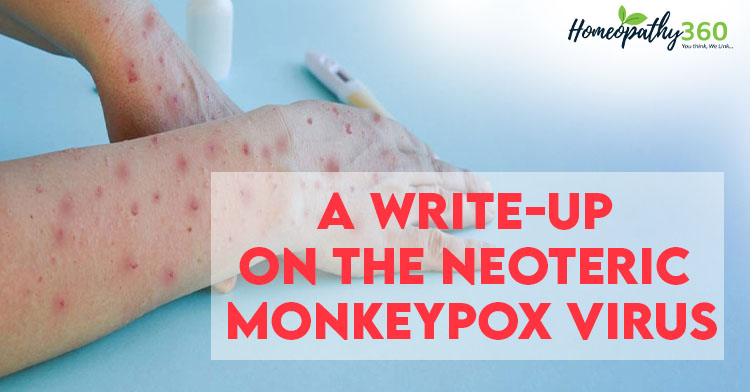
ABSTRACT
Since the recent devastating COVID-19 scenario in India, a viral zoonotic disease called the monkey pox has made its appearance. This disease dates to 1970 in the Democratic Republic of Congo where the first case was reported. Monkey pox virus belonging to genus orthopoxvirus of 0oxviridae family is responsible. This is known to spread by inhalation of respiratory droplets, contact with lesions, body fluids and fomites with an Incubation period of 6 to 13 days with symptoms like fever, severe headache, lymphadenopathy and rashes which lasts from 2 to 4 weeks. It has been found to be severe among children, immunosuppressed individuals with grave complications like sepsis, encephalitis, and bronchopneumonia which can become fatal. Symptomatic treatment can be provided by homoeopathic medicine to assist cure.
Keywords: monkeypoxvirus, neoteric, orthopoxvirus, research, homoeopathy for monkeypoxvirus, miasm for monkeypox, reportorial approach
Abbreviations: Human monkeypox (MPX), monkeypox virus (MPXV), deoxyribonucleic acid
(DNA), polymerase chain reaction (PCR)
INTRODUCTION
Human monkeypox (MPX) is a zoonotic disease caused by the monkeypox virus (MPXV) often begins with a combination of the following symptoms such as fever, headache, chills, exhaustion, asthenia, lymph node swelling, back pain and muscle aches (according to European centre for disease prevention and control) (1)
Monkeypox virus belonging to the same family as smallpox virus genera orthopox of poxviridae family is the causative agent. This can be contracted when coming in contact with the respiratory droplets, lesions and objects contaminated with the lesion, sexual contact. It takes around 6 to 13 days for the symptoms to appear. So far, two variants of this virus has been identified – the West African clade and the Congo basin clade, among them the former has been more common and less fatal (fatality rate 3.6 per cent). (2) It is now emerging as an epidemic after monkeypox cases have been reported in more than 42 countries (3)
It can get severe in children and immunosuppressed individuals.
EPIDEMIOLOGY
AGENT
Monkeypox virus is an enveloped double stranded DNA virus that belongs to the genus orthopoxvirus of the poxviridae family. Two variants were found in the central Africa and the West Africa. The central African variant was known to be more transmissible and severe and claimed lives of many with a fatality rate of 10.6 per cent
HOST
Natural reservoirs are yet to be found. However, certain rope squirrel, tree squirrels, Gambian pouched rats and certain primates are known to be naturally susceptible to monkey pox virus (4)
RISK FACTORS
Unprotected contact with wild animals especially those that are infected or dead, consumption of improperly cooked or raw meat, their blood and other body fluids must be avoided.
People having unprotected sex, immunosuppressed individuals, children, tribal people, pregnant women and those coming in contact with lesions and fomites are most susceptible. (4)
TRANSMISSION
Animal to human transmission can be indirect or direct.
Through bites/scratches, by preparation/consumption of meat or direct contact with animals. (4)
Human to human transmission can occur face to face through respiratory droplets following a prolonged contact, contact with body fluids, lesions, objects or clothes contaminated with lesions.
It can spread from mother to foetus as well (trans-placental).
INCUBATION PERIOD
The incubation period is usually from 6 to 13 days but can range from 5 to 21 days.
Period of communicability 1-2 days before the rash to until all the scabs fall off / gets subsided
PATHOPHYSIOLOGY
The route of entry of virus is oropharynx, nasopharynx and intradermal.
The monkeypox virus replicates at the inoculation site then spreads to local lymph nodes.
Primary V=viraemia leads to viral spread and seeding of other organs.
This represents the incubation period and typically lasts 7 to 14 days.
Onset of symptoms correlates with secondary viraemia leading to 1 to 2 days of prodromal symptoms such fever and lymphadenopathy. (5)
CLINICAL FEATURES
Prodromal period is from 0 to 5 days.
Symptoms such as fever, lymphadenopathy, severe headache, muscle aches, exhaustion. Chills and sweats, sore throat and cough occur.
Lymphadenopathy occurs with the onset of fever. They can be periauricular, axillary, cervical, inguinal.
They can be unilateral or bilateral.
Skin rashes usually begins within 1 to days of onset of fever. It lasts around 2 to 4 weeks.
They are well circumscribed and deep-seated undergoing umbilication.
Lesions can be painful till the healing period and can become itchy in the crust stage.
Lesions first appear on the tongue and mouth.
Macules spreads from face to arms, legs, palms and soles in centrifugal distribution within a day.
There is a slow evolution of rashes from a macular to papular to vesicular to pustular phase with the classic presentation of lesion being vesiculopustular.
Involvement is mostly on face and palms and soles, oral mucosa, genitalia and rarely conjunctiva.
Lesions progresses to papules, later vesicular by 4th to 5th day.
On 6th to 7th day, it becomes pustular with sharp and raised border, firm and deep seated.
It may become umbilicated or ulcerated later.
The lesions dry up by the end of 2nd week.
Scabs remain for week.
Healing of lesions occur with hyperpigmented atrophic scars hypopigmented atrophic scars, patchy alopecia, hypertrophic skin scarring and contracture/deformity of facial muscles following healing of ulcerated facial lesions.
A preference for palm and soles is the characteristic feature of monkeypox. (6)
RECURRENCY:
As per the recent studies, the chances of recurrence have not been ruled out.
COURSE AND PROGNOSIS:
It is a self-limiting disease with symptoms lasting from 2 to 4 weeks.
A case is considered to be severe when there is fever (greater than or equal to 38.3 degree Celsius) and the presence of rash (greater than or equal to 100 lesions), abnormal laboratory findings. (7)
Severe case occurring commonly in children and is related to the extent of virus exposure, patient health status and nature of complications underlying.
Immune deficiencies may lead to worse outcomes.
Rarely may it be fatal. In recent times, the case fatality rate has been around 3-6 %. (4)
COMPLICATIONS
Pitted scars, deforming scars, secondary infection, bronchopneumonia, respiratory distress, keratitis, corneal ulceration, blindness, sepsis and encephalitis are the complications. (8)
DIAGNOSIS:
Lab diagnosis is based on demographic information, medical history, travel history smallpox vaccination status, signs and symptoms, duration of illness, hematologic and serum chemistry. (7)
Cases are confirmed on the basis of specimen testing by viral culture, PCR for monkeypox virus and orthopoxvirus, electron microscopy.
Lab findings were the following: leucocytosis, lymphocytosis, thrombocytopaenia, elevated transaminase levels, elevated alkaline phosphatase level, and hypoalbuminaemia. (7)
MANAGEMENT
Patient isolation, protection of infected skin lesions, nutritional support.
Use of protective gears while handling the infected patients.
Sanitation of premises and objects exposed to the infected patient, infected animal, infected lesions.
Use of masks.
Practise of social distancing (4)
MEDICINAL MANAGEMENT:
MIASMATIC DIAGNOSIS:
Pseudo-psora
The nature of the disease is tri-miasmatic in nature (9) but the prominent symptoms like eruptions on palms and soles, itching, evolution of rashes from macular to papular to vesicular to pustular shows psoric background and symptoms like scab formation, ulceration and lymphadenopathy shows syphilitic background so it is of pseudopsoric origin (10)
RUBRICS (SYNTHESIS REPERTORY) (11)
- HEAD – PAIN
- EAR –SWELLING –About the ears- glands of
- EXTERNAL THROAT –INFLAMMATION – Cervical glands
- ABDOMEN – INFLAMMATION – ,glands, inguinal
- CHEST – INFLAMMATION – Axilla glands
- EXTREMITIES- ERUPTION – Hands – Palms
- FEVER – FEVER , heat in general
- SKIN – ERUPTION – rash –slow evolution of rash in eruptive fever
- GENERALS – INFLAMMATION –Lymphatic vessels
- GENERALS–PAIN – Muscles
HOMOEOPATHIC REMEDIES
Mercurius solubilis – 16/9
Rhus toxicodendron – 17/8
Belladonna – 14/8
Nitricum acidum – 16/7
Sulphur – 14/7
Lachesis mutus -13/7
Graphites – 11/7
Hepar sulphuris calcareum -10/7
Phosphorus -13/6
Arsenicum album -12/6
After repertorising the most observed symptoms, Mercurius solubilis came out to be well indicated in numerous cases. (11)
PREVENTION AND CONTROL:
Avoid contact with sick and dead animals. Avoid contact with objects and clothing contaminated with the lesions. Wash hands properly with soap and water. Always wear masks. Practise safe sex with the use of condoms. Providing protective gears to health workers handling infected materials. Avoid direct contact with people who may be infected with virus. Public awareness. (4)
CONCLUSION
As the studies on the virulence, transmission and evolution of the monkeypox virus is still going on, it’s important that we stay alert to this disease. The information here are collected from various studies and resources. And will equip us to handle a case with homoeopathy but it would also require us to be up-to-date with the new advancement in regard to monkeypox disease.
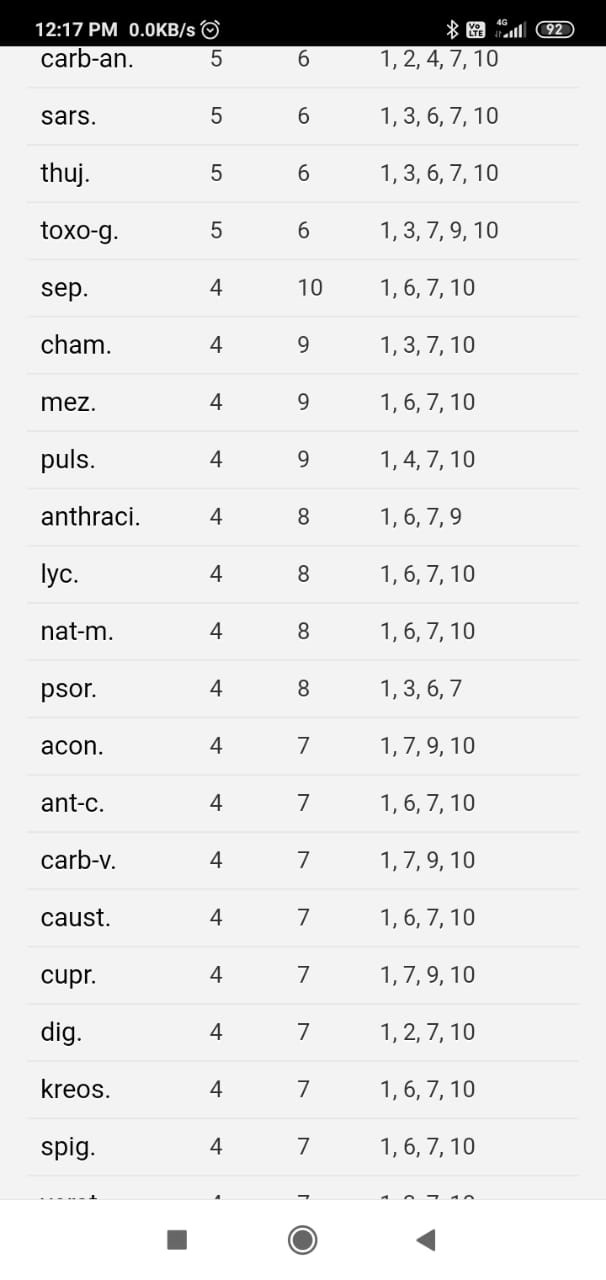
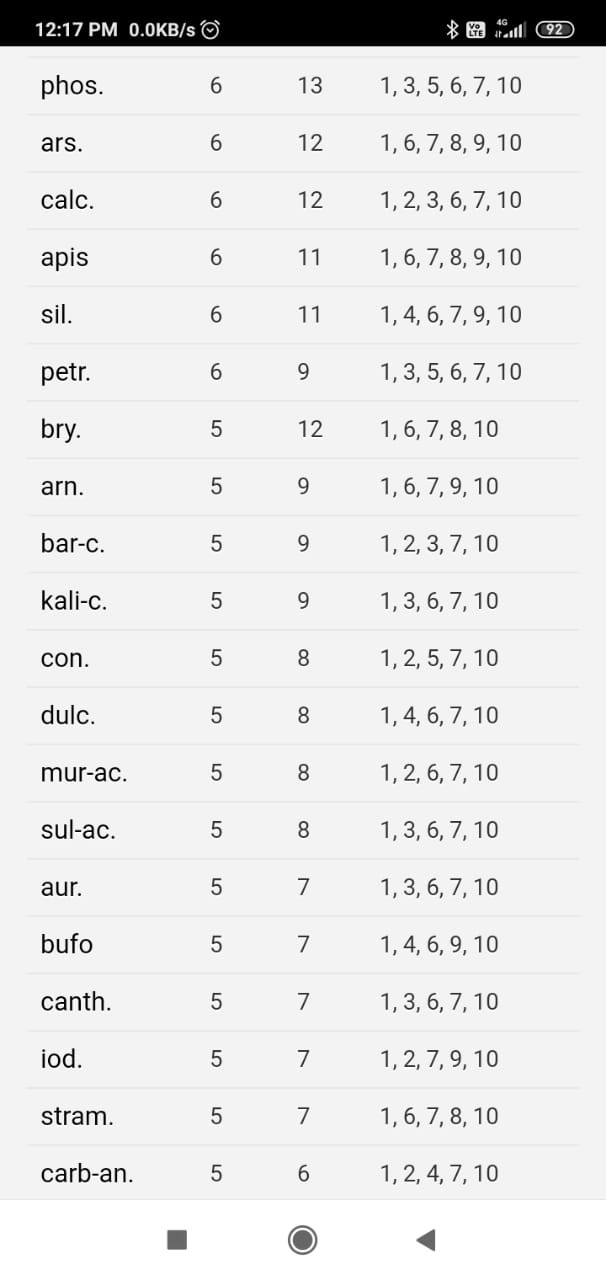
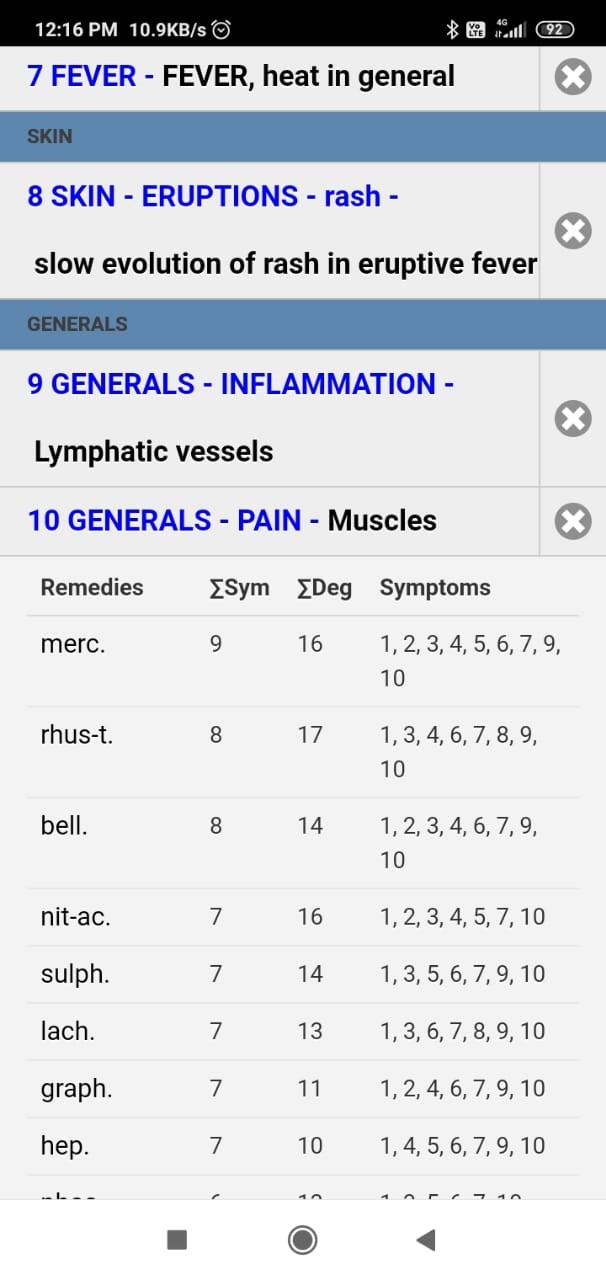
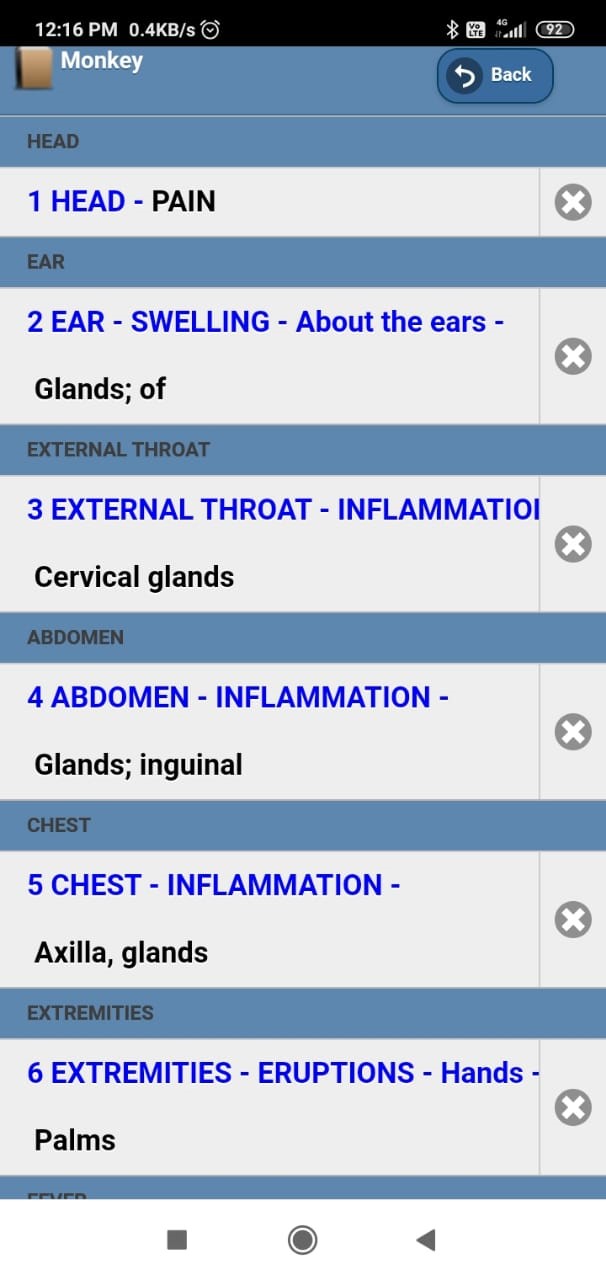
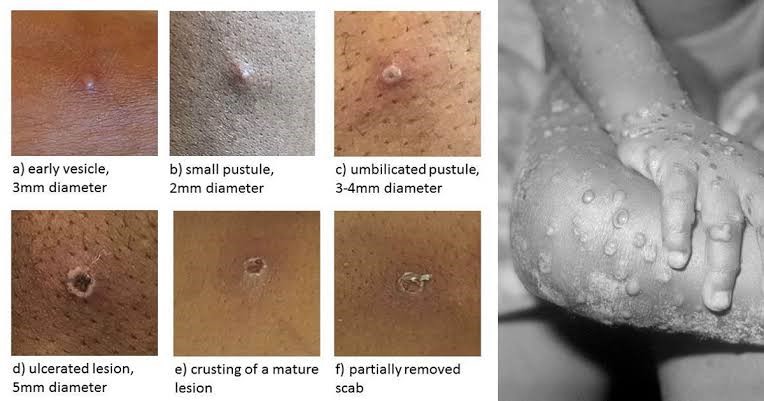
REFERENCES
1) Monkeypox. Available at https://www.ecdc.europa.eu/en/monkeypox
- Pub MED
The changing epidemiology of human monkeypox-A potential threat? A systematic review
Eveline M Bunge 1 , Bernard Hoet 2 , Liddy Chen 3 , Florian Lienert 2 , Heinz Weidenthaler 4 , Lorraine R Baer 5 , Robert Steffen 6 7. Available at:
https://pubmed.ncbi.nlm.nih.gov/35148313/
3) Multi-country monkeypox outbreak: situation update
https://www.who.int/emergencies/disease-outbreak-news/item/2022-DON396
- ) World Health Organization / fact sheets on monkeypox https://www.who.int/news-room/fact-sheets/detail/monkeypox#:~:text=Monkeypox%20is%20usually%20a%20self,material%20contaminated%20with%20the%20virus
5) Moore M1; Zahra F2. Monkeypox
https://www.ncbi.nlm.nih.gov/books/NBK574519/
P10 and 11
- Management of monkeypox. Availablr at https://main.mohfw.gov.in/sites/default/files/Guidelines%20for%20Management%20of%20Monkeypox%20Disease.pdf
- Huhn GD, Bauer AM, Krista Clinical Characteristics of Human Monkeypox, and Risk Factors for Severe Disease
Author Notes
Clinical Infectious Diseases, Volume 41, Issue 12, 15 December 2005, Pages 1742–1751, https://doi.org/10.1086/498115
https://academic.oup.com/cid/article/41/12/1742/344953
- Monkeypox. Available at https://www.slideshare.net/OlubunmiAfuye/monkeypox-by-dr-oo-afuye
- Speight S. (Comparison of chronic miasms)
- Banejea SK. MIASMATIC PRESCRIBING ITS PHILOSOPHY, DIAGNOSTIC CLASSIFICATIONS, CLINICAL TIPS, MIASMATIC REPERTORY AND MIASMATIC WEIGHTAGE OF MEDICINES
- Synthesis Repertory (RADAR)
About the Author:
BAmbily Sreekumar, Angela Allen, Samad K.S (Interns), Dr Hita Raj (SMO) ,
Sreevidhyadhiraja Homoeopathic Medical College, Trivandrum, Kerala, India.





